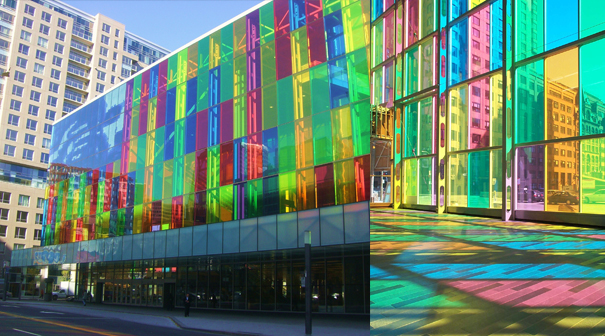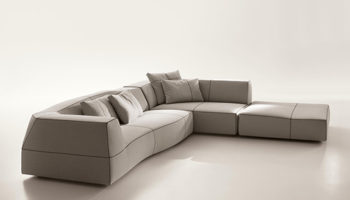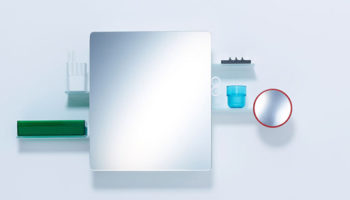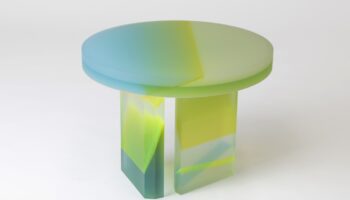Optichroic Glass Is Plenty Colorful
If we polled one hundred modern architects, I suspect we’d hear that architectural glass is one of our industry’s greatest material accomplishments (no pun attended). And for that reason, it’s important that we pay thanks to those companies whom have helped pave the way. Today, I draw everyone’s attention to Optichroic glass manufactured by Bendheim.
Optichroic glass manufactured by Bendheim.
Optichroic dichroic glass is the first glass of its type to be used for architectural application. It was originally developed in the late fifties by NASA to protect against the potentially harmful effects of direct sunlight and cosmic radiation, and in the past has been used for a variety of scientific and industrial purposes. But now, it’s striking visual properties are appropriate for broader architectural use.
Optichroic glass is created through specialized interlayer technologies. As the viewer's angle to the glass changes, so does its color, giving Optichroic its refined iridescent characteristics.
I’ve spent time speaking with Steven Jayson, Bendheim’s Vice President and one of three of the founder's grandsons now managing the company. He explains, "architects can now choose an authentic safety laminated dichroic glass from an unlimited variety of patterns. Our Optichroic glass offers an attractive aesthetic with the added durability of a scratch-resistant, easy to maintain glass. It has been rigorously tested by independent labs to ensure the Optichroic dichroic effect is long-lasting and stable."
If you are a curious bear like me, you’re probably wondering how this Optichroic glass will be used by the architect. For the purpose of prompting further conversation, I thought it might be fun to identify a sample built project I think might have benefited from this glass.

Expansion to Palais des Congrès de Montr©al. Designed by T©treault, Parent, Languedoc and Associates, Saia and Barbarese Architects and the architects Dupuis, Dubuc and Associates.
Let’s look at the expansion to the Palais des Congrès de Montr©al. This tends to be a controversial project so separate yourself from any disapproving thoughts you may have about the architecture itself, and focus on the purpose of the colorful glass facade.
Clearly the architect is interested in how this space transforms with sunlight, as color fills the interior throughout. While this is interesting, it’s a touch one-dimensional for me. The Optichroic glass appears to have higher interactive possibility. Yes, light is still the catalyst for this interaction, but a patron is actually experiencing the effects of this glass as a consequence of his own movement (rather than his merely being a spectator). Color is not only working towards a one-way aesthetic but might activate an interface between viewer and space, a somewhat more exciting architectural prospect if you ask me.
Let’s all keep our eyes and ears open for this material in new construction… one thing is for sure, you’ll know it when you see it, as this Optichroic glass is plenty colorful.




Leave a Reply